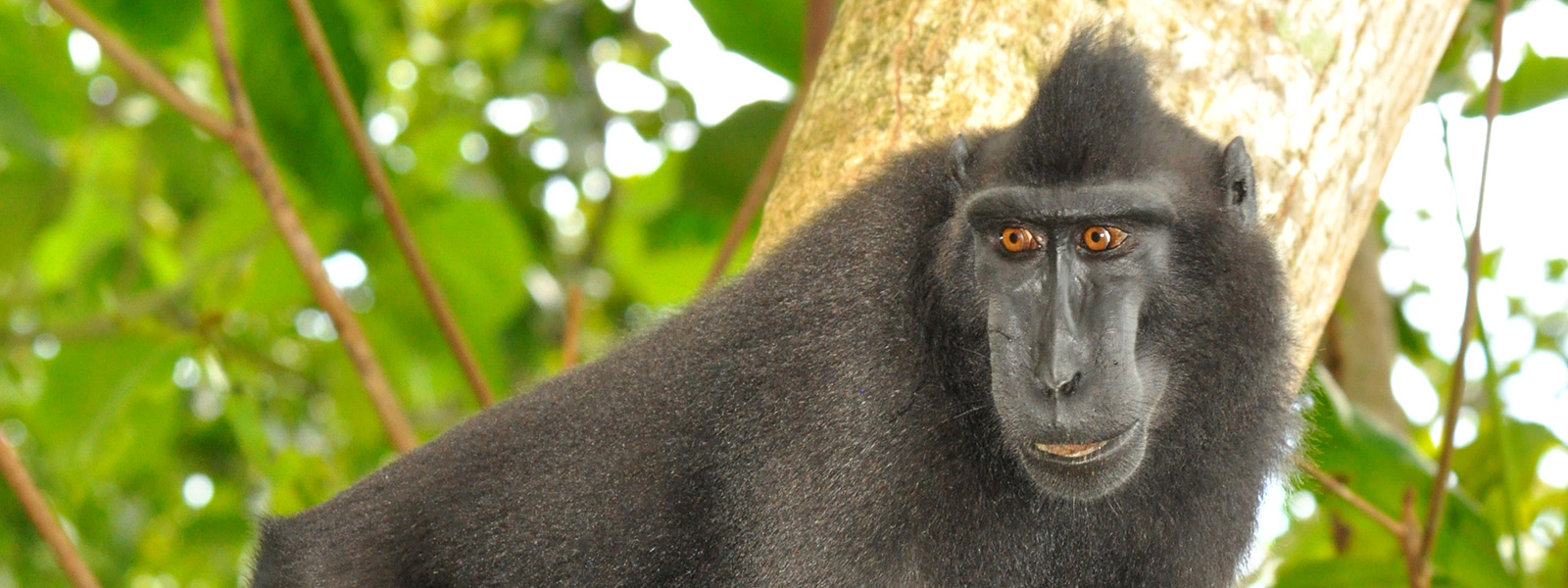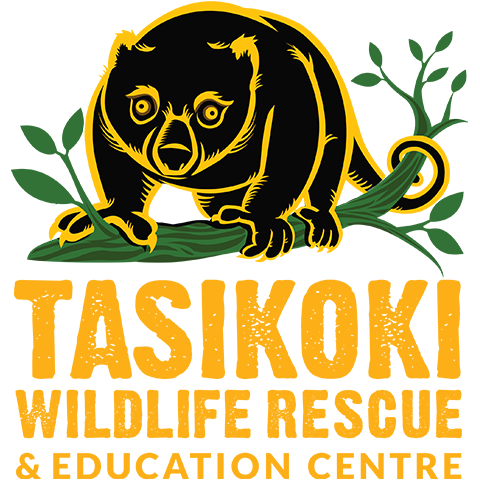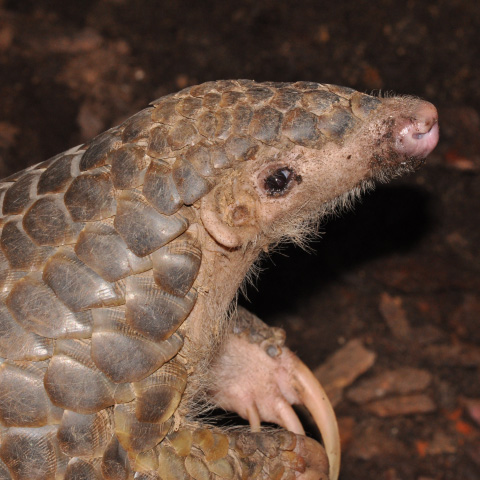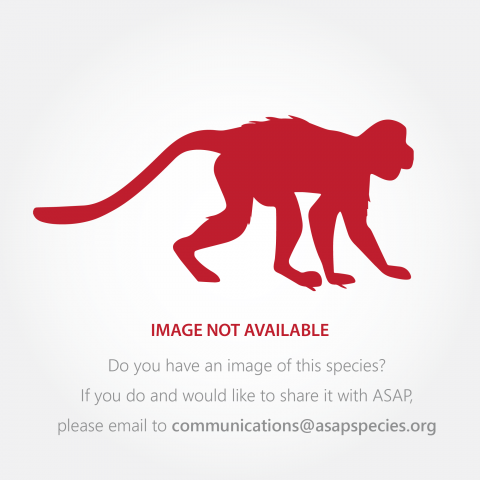Conservation Actions
This species is listed under CITES Appendix II, Critically Endangered. It is the most threatened of the seven species endemic to the island.
A dual parallel approach is key to its survival. First, as hunting is its primary threat, there must be a multi-stakeholder effort to reduce the supply and demand. On the supply side, there must be a vigorous park, road, and market patrol effort by government and non-government stakeholders to ensure that illegal capture and transport of Macaca nigra is halted. The multi-stakeholder Wildlife Crimes Unit Program by WCS and the government, initiated in 2001 (Lee et al. 2005), needs to be strengthened and expanded. Protection of existing populations is key to its survival. It occurs in several protected areas (Gunung Lokon, Gunung Ambang, Manembonembo, Tangkoko Batuangus, Dua Saudara, and Manado Tua at Bunaken National Park). At Tangkoko, the population appears to be relatively stable largely because there is high-profile ecotourism. That said, the park continues to suffer from continued encroachment from forest fires, agriculture, and small-scale timber collection.
On the demand side, education programs on their conservation and their habitats (e.g., Selamatkan Yaki), potential health risks associated with consuming M. nigra, and alternative livelihood initiatives through ecotourism and/or agro-forestry alternatives (Palacios et al, 2011) need to be carried out.
The macaques have a better chance of survival in Bacan where they were introduced where the food taboos of people protect the macaques. But the conservation value and the genetic viability of such populations are debatable.
Action Plan
Macaca Nigra Species Conservation Action Plan - Third Draft July 2015
Location Information
This species occurs on northeastern Sulawesi, Indonesia and the adjacent islands of Manado Tua and Talise. Historically it was also found on Lembeh island but the species has probably been extirpated from there. On Sulawesi it is found on the northern arm east of the Onggak Dumoga River and Mount Padang to the tip of the peninsula (Groves 2001). There is a fairly large introduced population on Bacan island in the Maluku Islands (Indonesia).
Geographic Range
Extant
Indonesia
Population Information
The 2008 assessment estimated that range-wide density was approximately three individuals/km² (Supriatna and Andayani 2008). At present, the lack of recent field data outside of Tangkoko Nature Reserve does not allow for a revised estimate. The largest and most viable population exists at the Tangkoko Nature Reserve where density increased from 51.4 individuals/km² between 2005 and 2011 (Kyes et al. 2013) to approximately 58.2 individuals/km² in 2015 (R. Kyes pers. comm.). Historically, the population has shown severe declines (O’Brien and Kinnaird 1996, Palacios 2011, Kyes 2012) since the species’ first systematic surveys in the 1970s by John and Kathy MacKinnon (MacKinnon 1983). Surveys in other protected areas in previous years yielded significantly lower density numbers: 22.8 individuals/km² at Manembonembo Nature Reserve (Lee 1995); Pulau Talise, 1.67 individuals/km² (Lee 2000); Gunung Ambang, 6.94 individuals/km² (WCS 1998 unpublished data); Pulau Manado Tua, 78 ± 34 macaques/km² (USAID 1995 unpublished data). Surveys in 17 unprotected forests throughout its range found macaques in three of the 12 Minahasa District forests while macaques were found in all the five forests in Bolaang Mongondow, with relatively large groups (10-50 individuals) (Feistner and Lee 2001). Melfi (2008) carried out a range-wide survey of Macaca nigra and found encounter rates very low to none (five sightings at Tangkoko, two at Ambang, and two at Manembonembo). The introduced population on Bacan island in the Moluccas was probably estimated to be at least 100,000 individuals in the late 1990s (Rosenbaum et al. 1998) but seems to have declined recently (Hilser et al., 2013). Nonetheless, the Bacan population is not considered in this assessment as it is an introduced population.
The population declines that warrant listing this species as Critically Endangered come not from forest loss but rather from hunting. Crested Macaques are hunted heavily by the local people for bush meat. Recent conclusive data confirming this are lacking, but anecdotal evidence shows that Crested Macaques continue to show up at key markets within its range. It is generally believed that there is only one viable population remaining of Crested Macaques, and that is in the Greater Tangkoko conservation area; this population has been reduced to a small, degraded patch of forest due to encroachment, hunting, and other exploitation. Elsewhere, there remain only tiny scattered groups. Therefore, based on hunting pressure and lack of connectivity between groups, we suspect a population size reduction of >80% over the last three generations (33 years) and recommend maintaining the Crested Macaques’ CR status. It would be highly desirable for any of the conservation and science organizations focused on this taxon to collect data that could verify these assumptions.
Threats
Hunting for its meat, particularly from demand for consumption in North Sulawesi, is the primary threat for this species (Lee 1999). Carcasses are routinely seen at key North Sulawesi markets. They are served at special celebrations including large events and religious occasions such as Christmas. At the subsistence hunting level, traps and snares in and around agricultural areas both deter crop damage and provide meat. The species has also suffered from major habitat loss from industrial agriculture, shifting cultivation, mining, and forest fires. Although there are intact forests in many places throughout its range, currently much of it is unoccupied. Finally, some animals are caught for the pet trade.
Partners
IUCN Red List Account Link
Please click here to see the species' IUCN Red List Account page.
Photo Credits
Roland Wirth (category and featured image)








